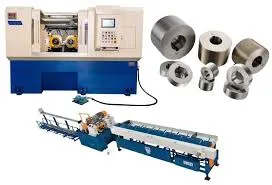
-
 Afrikaans
Afrikaans -
 Albanian
Albanian -
 Amharic
Amharic -
 Arabic
Arabic -
 Armenian
Armenian -
 Azerbaijani
Azerbaijani -
 Basque
Basque -
 Belarusian
Belarusian -
 Bengali
Bengali -
 Bosnian
Bosnian -
 Bulgarian
Bulgarian -
 Catalan
Catalan -
 Cebuano
Cebuano -
 Corsican
Corsican -
 Croatian
Croatian -
 Czech
Czech -
 Danish
Danish -
 Dutch
Dutch -
 English
English -
 Esperanto
Esperanto -
 Estonian
Estonian -
 Finnish
Finnish -
 French
French -
 Frisian
Frisian -
 Galician
Galician -
 Georgian
Georgian -
 German
German -
 Greek
Greek -
 Gujarati
Gujarati -
 Haitian Creole
Haitian Creole -
 hausa
hausa -
 hawaiian
hawaiian -
 Hebrew
Hebrew -
 Hindi
Hindi -
 Miao
Miao -
 Hungarian
Hungarian -
 Icelandic
Icelandic -
 igbo
igbo -
 Indonesian
Indonesian -
 irish
irish -
 Italian
Italian -
 Japanese
Japanese -
 Javanese
Javanese -
 Kannada
Kannada -
 kazakh
kazakh -
 Khmer
Khmer -
 Rwandese
Rwandese -
 Korean
Korean -
 Kurdish
Kurdish -
 Kyrgyz
Kyrgyz -
 Lao
Lao -
 Latin
Latin -
 Latvian
Latvian -
 Lithuanian
Lithuanian -
 Luxembourgish
Luxembourgish -
 Macedonian
Macedonian -
 Malgashi
Malgashi -
 Malay
Malay -
 Malayalam
Malayalam -
 Maltese
Maltese -
 Maori
Maori -
 Marathi
Marathi -
 Mongolian
Mongolian -
 Myanmar
Myanmar -
 Nepali
Nepali -
 Norwegian
Norwegian -
 Norwegian
Norwegian -
 Occitan
Occitan -
 Pashto
Pashto -
 Persian
Persian -
 Polish
Polish -
 Portuguese
Portuguese -
 Punjabi
Punjabi -
 Romanian
Romanian -
 Russian
Russian -
 Samoan
Samoan -
 Scottish Gaelic
Scottish Gaelic -
 Serbian
Serbian -
 Sesotho
Sesotho -
 Shona
Shona -
 Sindhi
Sindhi -
 Sinhala
Sinhala -
 Slovak
Slovak -
 Slovenian
Slovenian -
 Somali
Somali -
 Spanish
Spanish -
 Sundanese
Sundanese -
 Swahili
Swahili -
 Swedish
Swedish -
 Tagalog
Tagalog -
 Tajik
Tajik -
 Tamil
Tamil -
 Tatar
Tatar -
 Telugu
Telugu -
 Thai
Thai -
 Turkish
Turkish -
 Turkmen
Turkmen -
 Ukrainian
Ukrainian -
 Urdu
Urdu -
 Uighur
Uighur -
 Uzbek
Uzbek -
 Vietnamese
Vietnamese -
 Welsh
Welsh -
 Bantu
Bantu -
 Yiddish
Yiddish -
 Yoruba
Yoruba -
 Zulu
Zulu
Exporters of Thread Rolling Machines and Their Operational Efficiency in Global Markets
The Role of Thread Rolling Machines in Modern Manufacturing
In the world of manufacturing, precision and efficiency are paramount. Among the variety of machinery utilized in production processes, thread rolling machines stand out for their unique ability to create high-quality, precise threads on metal parts. These machines have garnered significant attention from exporters looking to meet the increasing demands of global markets, particularly in sectors such as automotive, aerospace, and construction.
Thread rolling is a cold-working process that deforms the material to create threads rather than removing material. This technique offers several advantages over traditional machining methods. For instance, thread rolling produces stronger threads with superior fatigue resistance, thanks to the compression of the material’s grain structure. This enhances the product's overall durability—an essential feature for components subject to high stress and strain.
The process typically involves placing a cylindrical workpiece between two rotating dies, which have the thread profile cut into them. As the dies rotate and move toward each other, they press against the workpiece, deforming it and forming the desired thread pattern. This method is not only faster but also more economical, as it generates minimal waste material, which is a crucial consideration in resource-conscious manufacturing environments.
The demand for thread rolling machines continues to grow, driven by various industries seeking to improve their production capabilities. Exporters of these machines have seen a notable increase in interest from manufacturers worldwide, particularly as sectors ramp up their production post-pandemic. Countries in Asia, Europe, and North America are key markets for thread rolling machine exporters, who are keen to establish themselves in this lucrative landscape.
thread rolling machine working exporters

Innovation plays a critical role in the evolution of thread rolling technology. Modern machines come equipped with advanced features such as CNC (Computer Numeric Control) systems, which enhance precision and allow for more complex thread profiles. Automation and robotics integration have also streamlined operations, reducing labor costs and increasing throughput. Exporters are capitalizing on these technological advancements to offer machines that not only meet but exceed the expectations of buyers looking for cutting-edge manufacturing solutions.
Moreover, as industries shift towards sustainability, thread rolling machines are gaining an added spotlight for their efficiency. The cold working method they employ consumes less energy compared to traditional machining processes. Additionally, the reduction in waste makes thread rolling an eco-friendlier choice, aligning with the global push towards greener manufacturing practices.
For businesses looking to invest in thread rolling machines, selecting a reliable exporter is crucial. Potential buyers should consider factors such as the exporter’s reputation, the quality of their machines, after-sales support, and warranty options. It is also beneficial to understand the technological capabilities of the offered machines, as these features can significantly impact production efficiency and product quality.
In conclusion, thread rolling machines are vital assets in the manufacturing landscape, particularly for industries requiring high-strength threaded components. With the ongoing global demand for these machines, exporters play a crucial role in providing innovative solutions that cater to the needs of modern manufacturing. As technology advances and sustainability becomes more relevant, thread rolling machines are poised to remain at the forefront of manufacturing excellence, offering efficiency, durability, and precision in thread production.
